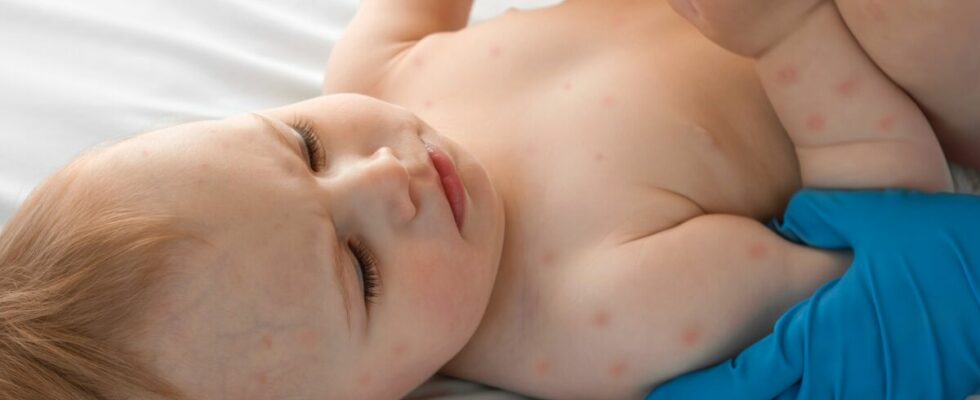Every year, many children contract chickenpox. Although generally benign, this disease is feared because of its itching and contagiousness. This is why the duration of symptoms is often a major concern for parents.
1. Causes of chickenpox in babies
As indicated in the French Society of Dermatology, chickenpox is a highly contagious disease caused by the VZV virus (Varicella-Zoster Virus). It is a DNA virus of the herpesviridae family. Chickenpox represents the clinical phase of primary infection by this virus, while shingles corresponds to its reactivation from the cutaneous sensory lymph nodes, where it remains latent. The incubation, the interval between contamination and the first symptoms, is 14 days. The disease is more common in spring. Transmission is primarily through the air, with the virus entering through the mucous membranes of the respiratory tract, conjunctiva and oropharynx. Contagion begins two days before the rash and stops when the blisters disappear, the scabs being not contagious.
2. Symptoms of chickenpox in babies
After being exposed to someone with chickenpox, the child goes through an incubation period of 10 to 21 days without apparent symptoms. Then, he presents with a moderate fever of up to 38°C, possibly accompanied by headaches. Redness appears on the skin, quickly evolving into soft blisters surrounded by a red halo. These vesicles, measuring three to four millimeters in diameter, contain a clear liquid which quickly becomes cloudy. Pruritus, corresponding to significant itching of the skin, is also present.
The rash usually begins on the neck, chest, stomach, or back, but can gradually spread to the entire body, including the scalp and face. Lesions can also appear inside the mouth or on the genital mucous membranes in the form of ulcerations. The palms of the hands and soles of the feet are spared from the rash.
3. Duration of chickenpox symptoms in babies
Recovery from chickenpox usually occurs within 10 to 12 days, even if there are many blisters. The blisters dry out to form a brownish crust, becoming non-contagious at this stage. Around the sixth day, the crust falls off, leaving a pink spot which disappears without after-effects, unless it is scraped off. In cases of multiple outbreaks of chickenpox, vesicles may coexist with crusted lesions. Once all vesicular lesions are no longer contagious, the child can return to the community.
4. How to prevent chickenpox in babies?
As indicated by Public Health France, widespread vaccination of infants against chickenpox is not recommended. Current guidelines recommend vaccination for people with no or uncertain history of chickenpox, including adolescents 12 to 18 years of age, women of childbearing age, individuals in contact with a case, healthcare professionals and early childhood, people in close contact with immunocompromised individuals, as well as children candidates for organ transplants.
Sources
- Chickenpox, a very contagious disease, French Society of Dermatology, December 2019
- Recognizing chickenpox, Health Insurance, September 2023
- Chickenpox: Public Health France publishes an update as of March 27, 2017, Public Health France, March 27, 2017
- Chickenpox, Vaccination Info Service, a Public Health France site, September 26, 2023
Read also :
⋙ Chickenpox: 6 grandmother’s tips to relieve symptoms
⋙ Complications of chickenpox in children
⋙ Chickenpox in adults: what are the risks?
